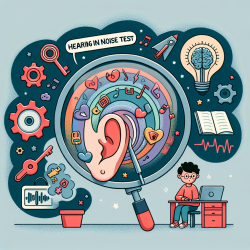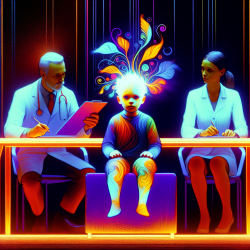Introduction
Neuropathic pain (NP) is a significant yet often underrecognized and undertreated component of sickle cell disease (SCD), particularly in adolescents. Recent research by Rees et al. (2024) sheds light on the barriers to effective NP management in this population, highlighting both clinician and patient perspectives. Understanding these barriers is crucial for practitioners aiming to improve treatment outcomes for adolescents with SCD.
Understanding the Barriers
The study reveals that a majority of clinicians acknowledge the significant contribution of NP to pain in SCD patients. However, barriers such as concerns about medication adherence, lack of pediatric guidelines, and patient concerns about side effects hinder effective management. Additionally, scheduling issues and perceived patient disinterest pose challenges to referrals to pain management specialists.
Clinician Insights
Clinicians surveyed expressed a belief in the efficacy of NP medications for reducing chronic pain and opioid use. Despite this, a substantial number of clinicians reported discomfort in managing NP medications, citing the absence of formal pediatric guidelines as a significant barrier. This indicates a need for targeted education and the development of specific guidelines to enhance clinician confidence and competence in NP management.
Patient Perspectives
Interestingly, most adolescents with SCD showed a willingness to consider NP medications and referrals to pain management specialists. However, they expressed concerns about medication side effects and a lack of knowledge about NP treatments. This highlights the importance of patient education and the provision of clear, accessible information about NP and its management.
Implementing Change
To bridge the gap between clinician and patient perspectives, practitioners should focus on the following strategies:
- Education: Provide comprehensive education for both clinicians and patients about NP, its impact, and available treatment options.
- Guideline Development: Advocate for the creation of pediatric-specific guidelines for NP management in SCD to standardize care and improve clinician confidence.
- Enhanced Communication: Foster open dialogue between clinicians and patients to address misconceptions and align treatment goals.
- Nonpharmacologic Interventions: Explore and integrate nonpharmacologic treatments such as yoga and acupuncture, which patients are willing to consider.
Conclusion
Improving NP management in adolescents with SCD requires a multifaceted approach that addresses both clinician and patient barriers. By enhancing education, developing guidelines, and fostering communication, practitioners can significantly improve treatment outcomes and quality of life for these patients.
To read the original research paper, please follow this link: Patient and clinician beliefs about potential barriers to treatment of neuropathic pain for adolescents with sickle cell disease.










